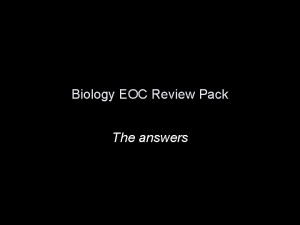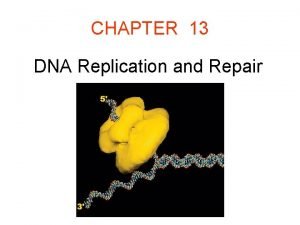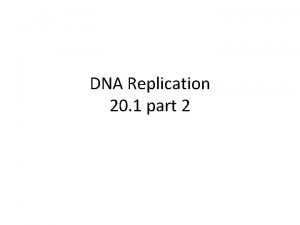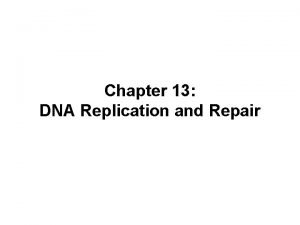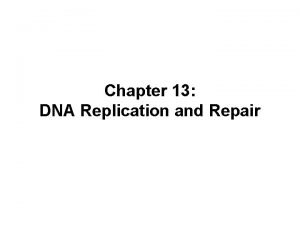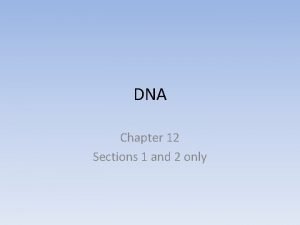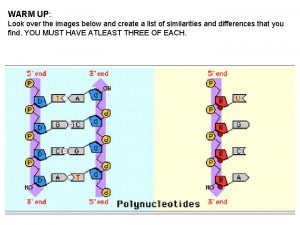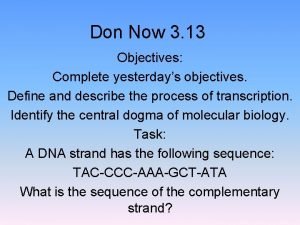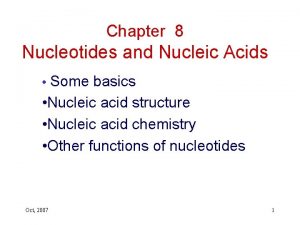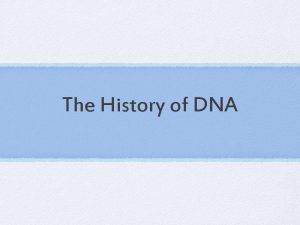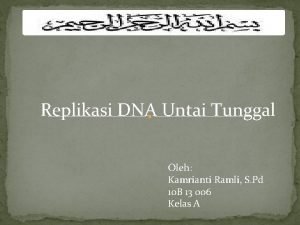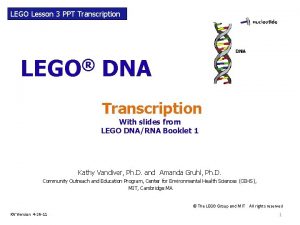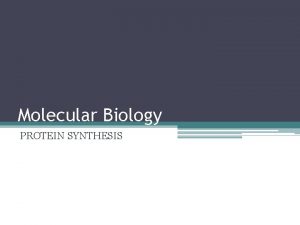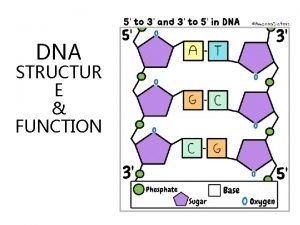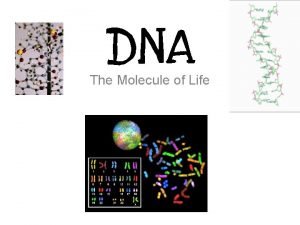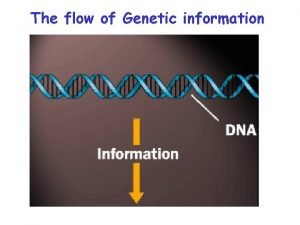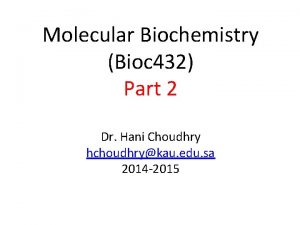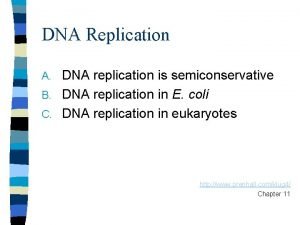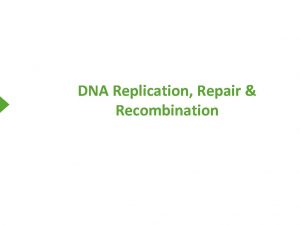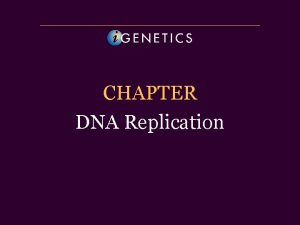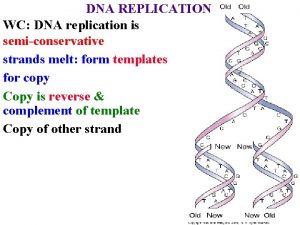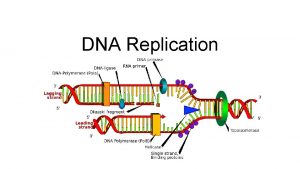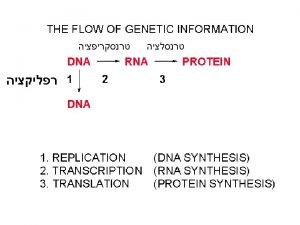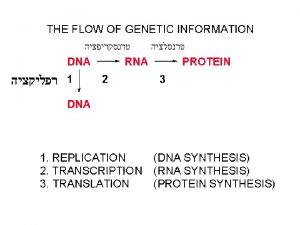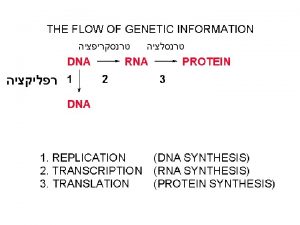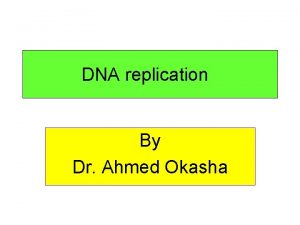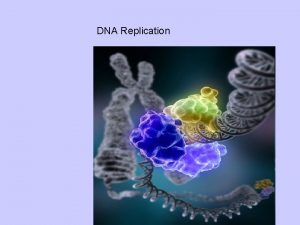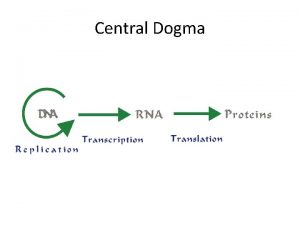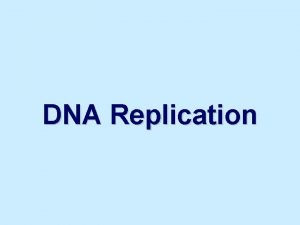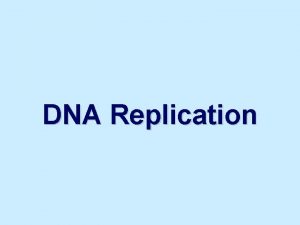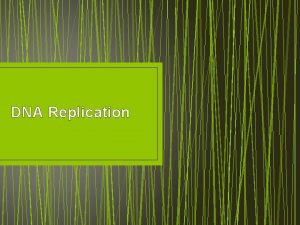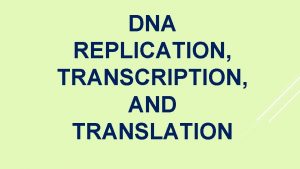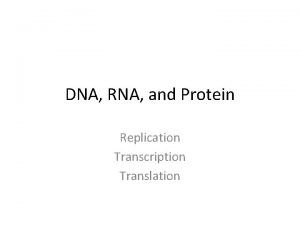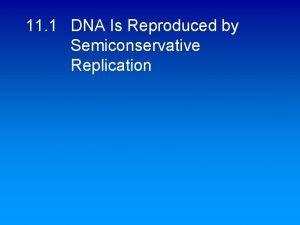DNA Replication Replication is semiconservative one strand is

























- Slides: 25







DNA Replication • Replication is semi-conservative (one strand is old, one strand new)


Origins of Replication • Where DNA Replication starts • Differs between organisms – Prokaryotes = 1 origin of replication – Eukaryotes = many different origins of replication


General Process of DNA Replication • Step 1: Initiator Proteins bind to origins of replication to begin replication – Attracts other enzymes involved in replication process • Step 2: – DNA Helicase separates the DNA helix

General Process • Step 3: Primase builds a primer at the 5’ end of the new DNA strand Primase 5’ 3’ 5’ RNA Primer DNA Polymerase III

General Process • Step 4: DNA Polymerase III builds the new strand of DNA in a 5’ to 3’ direction


-Nitrogenous bases are located in the cytoplasm -They enter the nucleus through the pores in the nuclear membrane

Problem… • How can both strands of DNA be replicated in a 5’- 3’ direction at the same time if they are antiparallel? • Answer: leading and lagging strands

Leading and Lagging Strands • Leading strand is synthesized continuously in the direction of replication (goes in the same direction as helicase) • Lagging strand is synthesized in short fragments the opposite direction of replication (opposite direction as helicase)


DNA Ligase • DNA Ligase seals Okazaki fragments together – Forms covalent bonds between nucleotides to create a continuous strand of DNA




Thymine is added accidentally. DNA polymerase cuts the damaged DNA. The proper base is added. Ligase joins the two spots.


 Why is dna replication considered semiconservative
Why is dna replication considered semiconservative Dna replication
Dna replication Dna replication is considered semiconservative because
Dna replication is considered semiconservative because Bioflix activity dna replication lagging strand synthesis
Bioflix activity dna replication lagging strand synthesis Replication transcription translation
Replication transcription translation Semiconservative replication
Semiconservative replication Semiconservative replication
Semiconservative replication Semiconservative replication
Semiconservative replication Semiconservative replication
Semiconservative replication Mrna strand that is complementary to the dna strand aattgc
Mrna strand that is complementary to the dna strand aattgc Template strand, new strand, base pair, and dna polymerase.
Template strand, new strand, base pair, and dna polymerase. Dna polymerase function in dna replication
Dna polymerase function in dna replication Dna rna protein synthesis homework #2 dna replication
Dna rna protein synthesis homework #2 dna replication Ring of fire
Ring of fire Watson strand crick strand
Watson strand crick strand Watson strand crick strand
Watson strand crick strand Dna polymerase
Dna polymerase Dna strand
Dna strand Single strand dna
Single strand dna Lego dna strand
Lego dna strand Mrna strand
Mrna strand Nucleic acid dna structure
Nucleic acid dna structure Forms of dna
Forms of dna Amino acid decoder
Amino acid decoder Dna replication is semi-conservative
Dna replication is semi-conservative 5 enzymes responsible for dna replication
5 enzymes responsible for dna replication
